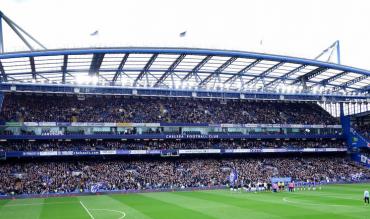We are all by now acutely aware of the unprecedented strategies being implemented at Chelsea, post-Roman Abramovich.
With the American billionaire Todd Boehly at the helm it has become normal practice to place players on seven or eight year contracts, to better navigate Financial Fair Play regulations.
Furthermore, the club has embarked on an accelerated – not to mention ludicrously expensive – overhaul of an aging squad, selling or releasing a remarkable 14 players this summer alone, all while splurging over a billion pounds on a multitude of new arrivals.
There have been twenty-six signings to be precise, spread over three windows, and not including free transfers. There is also a high turnover of managers to consider too.
All of which is to say – with some understatement – that since the Boehly-led consortium took control of the West London giants for the sum of £4.25 billion in May 2022, an awful lot has happened in a very quick period of time, with Chelsea now a completely different incarnation to what it recently was.
It has at times been hard to keep up.
Regarding the contract lengths, and indeed the sheer scale of Chelsea’s expenditure, it is telling that financial analysts who know best about such things consider the model high risk, and likely doomed to fail in the long-term.
And on these matters it is probably wise to bow to their learned judgements.
When we turn to the team itself however, along with the appointment late-May of Mauricio Pochettino, it is possible for us all to make a considered assessment as to how the ambitious project is going. Moreover, to gauge – on the evidence put before us so far – its chances of ultimately succeeding.
We are, after all, deeply entrenched in autumn so even at this early stage, hints have become clues, some substantial.
The first of which is a sizable one in importance, that being Chelsea’s fading hopes of securing a Champions League spot come May.
With so many new players to assimilate into a squad that Pochettino himself is having to adapt to, understandably the Argentine has found it difficult to settle on an ideal starting eleven to date, using 23 different players just ten games in.
Granted, this is the same number as Arsenal but whereas Mikel Arteta is deploying the full extent of his squad with European commitments to juggle – and crucially while knowing the strengths and character of each and every one of his players – with Pochettino there is a distinct air of trial and error about his selections.
He is trying things out. He is learning about the personnel he has at his disposal and how they respond in a thousand different situations.
Meanwhile, as this experimentation is ongoing Chelsea’s rivals are pulling well clear as the defeats rack up. Presently the Blues’ Premier League top four odds can be described as distant, almost double that of Aston Villa’s.
They have won just three in ten, enduring their worst start for 15 years.
It simply cannot be under-estimated how critical it is that Boehly’s model brings in Champions League money sooner rather than later, but looking at the squad what is most striking is how potential has been prioritised over finished articles.
This again takes us back to the model overall being extremely high risk, as well as just plain baffling in some respects. Chelsea need results now but have wholly invested in the future.
Cole Palmer, a £45m purchase on transfer deadline day epitomises this contradiction perfectly.
The 21-year-old has the creative chops and promise to become a superstar one day, and for sure has already shown glimpses of his supreme ability at the Bridge. But Chelsea need a superstar right now, a proven elite talent who can influence proceedings week in, week out, from August through to May.
Just behind the former Manchester City prodigy, we find a midfield packed with brilliant youngsters but therein lies its own problem. Because all they have are brilliant youngsters.
In years to come it is reasonable to expect Enzo Fernandes competing for the loftiest individual merits, and for Moises Caicedo to boss Premier League centre-circles.
But is it realistic to think that a midfield roster with an average age of 21.8 years can consistently negotiate the toughest challenges that are thrown up regularly in the Premier League?
Where is the experience? Where is the nous? Frankly, it was sold off last summer.
Yet it is up front where the biggest concerns lie.
Mykhailo Mudryk has flattered to deceive as much as he has impressed. Raheem Sterling’s impact depends on a career rejuvenation, something that cannot be replied upon.
Nicolas Jackson meanwhile has the weight of the world on his young shoulders, and boy is it showing.
From Chelsea’s cornucopia of signings a good manager such as Pochettino should be able to forge a decent side with a clear identity, but he needs a good deal of time to do this.
And time is something neither he, nor the club, has in spades.
So is this extraordinary project doomed to fail after all? Frustratingly, they appear to have all the right ingredients to become a major force again, but by throwing too many of them into a mixing bowl all at once we’re in danger of being served up a major mess.
And in the context of the football betting, their lengthy odds to achieve top four only mirrors their distant chance of lasting the course.
*Credit for all of the photos in this article belongs to Alamy*


